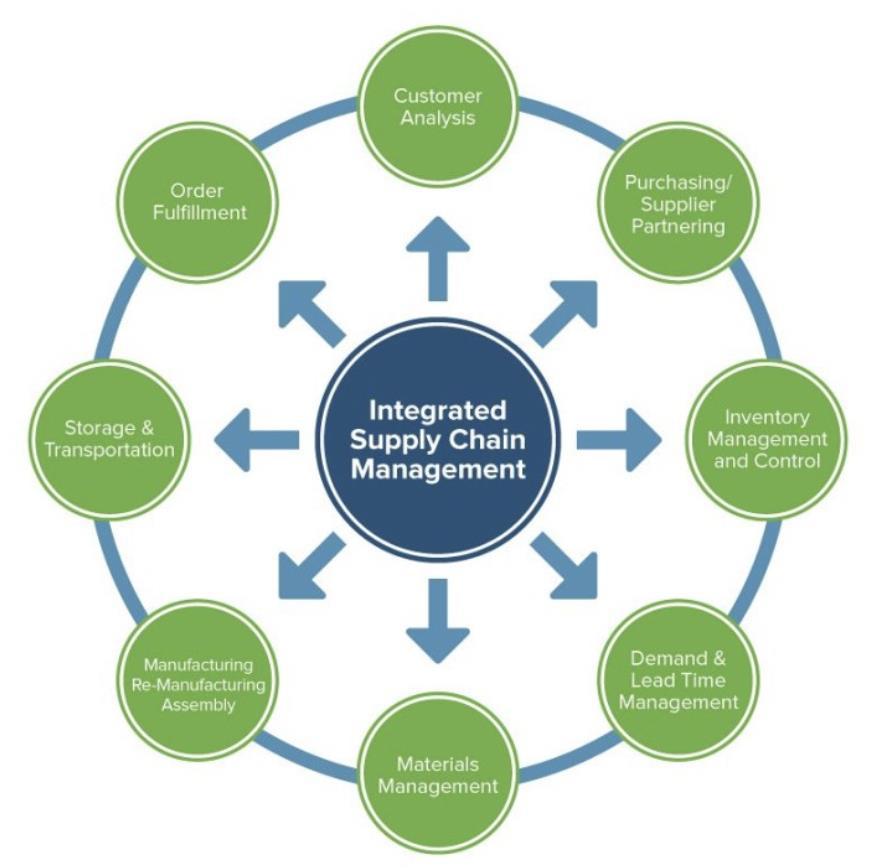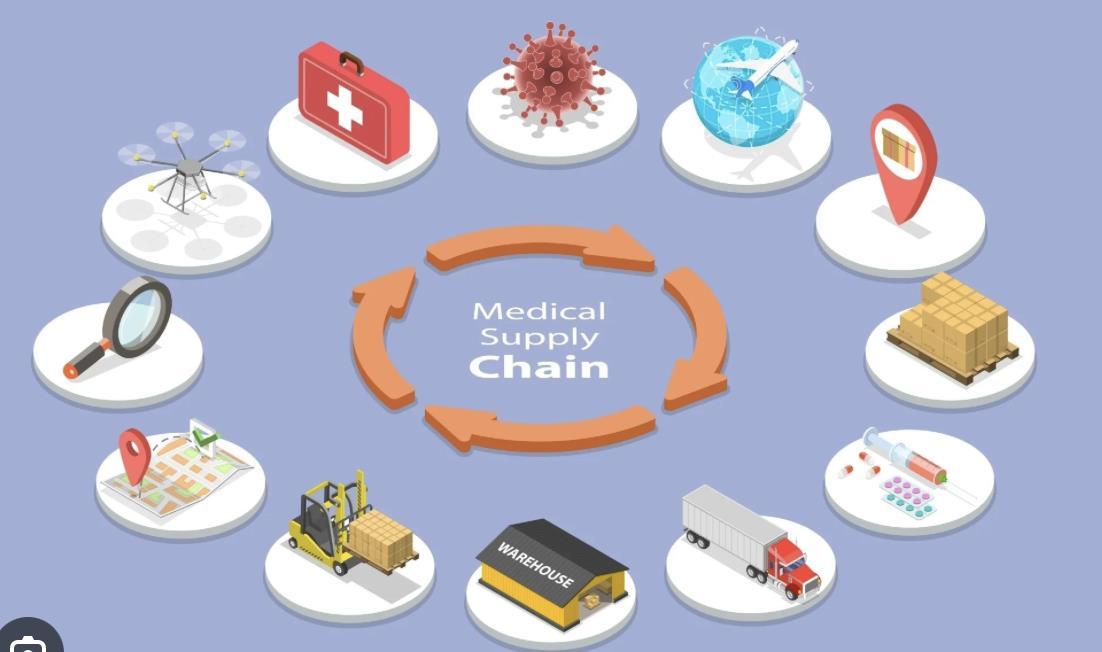Lessons Learned in Advancing Supply Chain Resilience in Canada’s Health Sector
Dr. Anne Snowdon, BScN, MSc, PhD, FAAN





SCAN Health © 2024
Where the CoP Started (2022)
Impact of the Pandemic

• 2,632,916 cases of COVID (reported)
• 150,546 cases of COVID case among health workers
• 46 deaths of health workers (9 jurisdictions)

SCAN Health © 2024
2
Deaths in LTC were higher in Canada than the OECD average and most other countries.
Impact on Long Term Care
Global Comparison

3% of COVID Cases in Canada were residents of Long-Term Care
43% of COVID Deaths were residents in Long Term Care




SCAN Health © 2024
3
Health Workforce Impact
Persistent Global Shortages

• Betrayal of health system leadership
▪ Failure to protect
▪ Compliance focused
▪ Massive shortages of PPE in communities
▪ Primary care – financial hardship
• Moral Distress: loss of autonomy to make decisions; inability to offer “best” care to patients
▪ Are the “cold face” of explaining to patients why care is not available, or ideal due to supply shortages
• Over 50% physicians report symptoms of burnout, 30-40% consider leaving job
• There is not a shortage of workforce, but a shortage of workforce willing to work in these work environments (Aiken et al, 2024)

SCAN Health © 2024
4
Supply Chain in Canada’s Health Systems
• Diverse array of supply chain teams, organizations, leadership mandates
• Multiple stakeholders; complex Systems
▪ Federal, provincial/territorial agencies or teams (ex. PHSA; Supply Ontario)
▪ GPO’s: contracting, procurement
▪ Pharmacies, Retail: consumer facing
▪ Health system teams (e.g. hospitals)
• Profoundly limited supply chain capacity in nonhospital settings, and no data
▪ Home care
▪ Community care
▪ Long term care
• Patient and workforce focus unclear


SCAN Health © 2024
5
What We are Learning in This Community of Practice

• Deep Knowledge and Expertise within stakeholder groups
▪ Industry
▪ GPO’s
▪ Supply Chain Organizations
▪ Government agencies
▪ Public Health
▪ Health Systems
• Yet, Connectivity between these stakeholders very limited

SCAN Health © 2024
6
The “Black Hole” of Silos

• Committees working on shortages
• Academic teams defining critical product lists

• Government agencies define pricing, product approval
• Clinician prescription patterns fuel demand (ex. Ozempic)
• Consumers demanding products, navigating system to access care
• Reactive approach shortages organized by product type
• “Planning for the war we just fought, start planning for the next war which will be different”
• Slipping back to the way we have always done things.
SCAN Health © 2024 7
Jurisdictional Culture
Absence of Collaboration and Transparency
Federal/Provincial/Territorial Culture (FPT)
Lack of Trust, Protectionism
Federal agencies
Operate independently of other jurisdictions
Provinces
“We won’t participate if Feds are leading this”
Defensive stance
“We already do that”
Little to no data sharing
Decisions are not data driven


SCAN Health © 2024
8
Absence of Person Centred Focus
The endpoint of health supply chain is a person’s life
Impact of Supply shortages on the lives of Canadians is unknown.
ex. shortage of chemotherapy drugs; shortage of imaging contrast dye for diagnostic testing.
Supply Chain Teams prioritize sourcing, procurement, distribution, managing shortages with no access to clinical data on patient outcomes.
Health Workforce has no knowledge of shortages, no communication: Moral Distress, System Betrayal


SCAN Health © 2024
9
Phase One: Create the CoP (Y1)
• Significant expertise and depth of knowledge among stakeholders in Canada.
• Limited knowledge sharing or awareness between stakeholder groups.
• Outcome of Year One:
▪ Multi-stakeholder dialogue did not exist.
▪ “Discovery” prevalent
What We are Learning: Year 3 Underway
Phase Two: Co-design of Supply Resilience solutions (Y2-3)

Phase Three: Pilot Test, Validate Solutions (Y4-5)
• Six Workgroups advancing solution strategies.
• Outcomes so far:
• Limitations of jurisdictional cultures and boundaries
• Emerging Solutions for each workgroup
• Feasibility
• Define scalable pathways to adoption of solutions
• Identify current infrastructure, organizations, supply chain systems able to validate and test solutions
• Identify Leadership strategy to advance adoption of supply resilience solutions
SCAN Health © 2024 10
multi-jurisdictional collaboration strategy End-to-end digital supply chain mapping. Connecting health workforce and patients.
The Way Forward: Transparency > Collaboration > Trust




manufacturing capacity and capability tool
communication strategy to mobilize health workforce expertise in supply management



Health Supply Chain Surveillance System
SCAN Health © 2024
11 Domestic
Proactive
Community of Practice Leadership and Policy Sourcing & Procurement Digital Supply Chain Domestic Supplier Network Workforce Sustainability Supply Chain Security
A
A
Resilient supply sourcing and procurement
Health
Workforce
Stakeholder Engagement Strategy to Enable Collaboration

Government
Patients/Citizens
Health System Leaders; Supply Chain Teams, Organizations
Industry (e.g. manufacturers, distributors, pharmacy, retail)
Key Features
• Person Centric Goals: health and safety of people (patients, citizens, workforce)
• Inclusive of All key stakeholder groups
• Builds on Existing Strengths: Integrates (engages) existing teams, strategies, jurisdictions to co-design solutions needed
SCAN Health © 2024
12
Leadership and Policy Workgroup
Federal-Provincial-Territorial Committee on Drug and Medical Device Shortages
Provincial/Territorial Emergency Management Committee
Provincial/Territorial Vaccine Management Committee
Multi-Jurisdiction Roundtable:
• Enable knowledge sharing to build transparency
• Mobilize expertise and capacity to manage shortages
• Create Visibility, Transparency of supply management
Effective Communication and collaboration among cross-functional teams
Informed decisions on managing key aspects of supply disruption –proactive, risk mitigation focused
Systems approach to Customization, reporting, real time information and data to inform stakeholder decisions
Data driven
Demand and Supply
Capacity management
Integrated System Approach
Inclusive Stakeholder Engagement

Procurement -
Sourcing Strategies (buffer stock, supplier diversity, policy tools)
Risk management: patients, workforce
External forces:
Geopolitical, Climate
Events
Cybersecurity
Surveillance of alert signals –strong, weak
Production: Capacity, agility, quality, market forces
SCAN Health © 2024
14
Domestic Supplier Platform
Goal: Advance supply resilience by strengthening domestic supplier capacity and sustainability
Searchable Supplier Data Platform
• AI driven data platform of domestic suppliers
• Product manufacturing capacity
• Certifications, quality data
• Ownership status
• Location within Canadian borders


SCAN Health © 2024
15
Health Workforce Engagement

Communications Strategy for the Clinician Workforce

• Create robust and transparent communication with clinicians.
• Engage clinicians to define alternative products or practices.
• Identify at-risk patient populations
• Advance clinical practice protocols and plans to support a coordinated strategy to manage disruptions.
SCAN Health © 2024 16

Supply Chain Security

Proactive Health Supply Chain Surveillance System
• Inventory and demand surveillance system to mitigate risk of supply disruptions or shift in demand.
• Proactive management of early signals of supply disruption (strong and weak)
• Define critical data points and data sharing strategy required to inform decisions and communicate to key stakeholders.
SCAN Health © 2024 17
Green Phase
No indication of disruption or demand surge.
Proactive Surveillance System for Supply Capacity
Recovery Phase
Sourcing strategies replenish inventory levels. Monitoring of inventory levels inform transition from Red to Amber and return to Green Phase.
Amber Phase
Inventory levels are low, measures to conserve focus on risk and equity. Alternative products, sources identified.
Red Phase
Urgent or emergent shortage unable to meet demand. Measures prioritizing highest risk populations and equitable management.
Sourcing & Procurement

Supply Sourcing to Support Resilience

• Define emerging models of sourcing and procurement across jurisdictions.
• Identify gaps, risks, opportunities for learning, across jurisdictions to advance sourcing and procurement that offers supply resilience.
• Explore options for reducing variability across jurisdictions, and support collaboration.
SCAN Health © 2024 19

Digital Supply Chain

Map End-to-End Digital Supply Chain Features
• Define the critical features of an end-to-end digital health supply chain.
• Inform health system decision makers on where and how to invest in digitally enabled supply chain.
• Enable transparency, and flow to data to support proactive surveillance, inform decisions in patient care settings, manage risk proactively.
SCAN Health © 2024 20
Transparency and Visibility
Mobilize and Share knowledge, expertise, capacity, and data to inform decisions.
Engage Clinicians and Patients to inform decisions on alternatives during shortages.
What We Must Achieve

Inclusive Collaboration
Enable Knowledge sharing
Engage all Stakeholder Groups, not just some
Mobilize knowledge sharing, expertise, data to achieve coordination or supply management
Build Trust
Move beyond limitations of jurisdiction culture: “we already do that”; ”we can’t do that if ‘they’ are involved”; “That is not what we do”
Prioritize the health of patients, and safety of the workforce.
Coordinate Proactive management of shortages
SCAN Health © 2024 21

“Fate will not create the new normal, our choices will”
(Berwick, 2020)
Advancing supply chain resilience is about people
* the Health of every Canadian
* the Health and sustainability of the health Workforce

SCAN Health © 2024
22
What do we need to better understand?

What are we missing?
What would you prioritize to advance first?
SCAN Health © 2024
23

SCAN Health © 2024 Thank You! 24 Anne W. Snowdon, RN, PhD, FAAN Professor, Strategy and Entrepreneurship Odette School of Business, University of Windsor snowdon@uwindsor.ca 519-817-2205






























